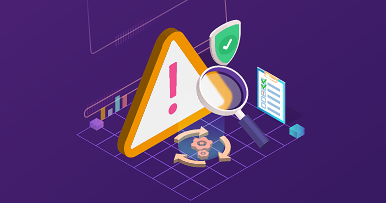How to Identify & Improve Weaknesses of Internal Controls?

Ritika Jain
Oct 09, 2024


Internal controls are essential for businesses to comply with regulatory frameworks, security standards, and data privacy laws. They are critical in safeguarding company assets, improving security and compliance posture, and maintaining operational integrity. However, internal controls are not foolproof, and when weaknesses arise, they can expose businesses to severe risks.
This blog will explore internal control weaknesses, their types, and best practices for evaluating and addressing them.
What are Internal Controls Weaknesses?
Internal control weaknesses refer to deficiencies within an organization's control system that hinder the achievement of control objectives. These weaknesses can arise from various sources, including inadequate policies, procedures, and processes and a lack of resources, training, or oversight. If left unaddressed, internal compliance weaknesses can compromise the integrity of an organization's operations, increasing the likelihood of non-compliance, security incidents, and data breaches. So, organizations must identify and remediate these weaknesses promptly.
Types of Internal Control Weaknesses
There are several types of internal control weaknesses, each affecting different aspects of an organization's operations. Below, we explore the key categories:
1. Technical Internal Control Weaknesses: Technical control weaknesses encompass deficiencies in controls related to IT systems, hardware, software, and the infrastructure that supports business operations. These include outdated software, a lack of encryption, weak access controls, and ineffective network security measures.
2. Administrative Internal Control Weaknesses: Administrative control weaknesses involve failures in documentation, policies, procedures, and management practices. Common issues include poor documentation of controls, insufficient policies and procedures, inadequate employee training, and communication gaps.
3. Operational Internal Control Weaknesses: Operational control weaknesses are deficiencies that arise from the improper execution of internal control processes. Common issues include Inadequate segregation of duties, lack of managerial oversight, inefficient processes, and improper execution of internal control procedures.
4. Architectural Internal Control Weaknesses: Architectural control weaknesses pertain to the deficiencies in the overall design of the control environment, including governance and organizational structure. These include flawed organizational structure, weak governance, and misalignment between control objectives and business goals.
Best Practices to Evaluate and Address Internal Control Weaknesses
Below is a structured approach to effectively identify and address internal control weaknesses:
1. Define Control Objectives: Establish clear and measurable control objectives aligned with the organization's business goals. These objectives should be specific, achievable, and designed to mitigate risks while ensuring operational efficiency and compliance. Regularly review and update objectives to reflect changes in the business environment.
2. Conduct Control Audit: Perform a comprehensive audit to assess the effectiveness of existing internal controls. The compliance team can conduct this internally or externally by an independent auditor. Employ various audit techniques, including interviews, document reviews, and process observations, to identify gaps in controls and assess whether existing controls function as intended.
3. Test Control Effectiveness: Testing controls is essential to determine whether they are operating effectively. Methods such as walkthroughs, inspections, and sampling can be used to evaluate the robustness of the controls and identify potential weaknesses.
4. Document and Analyze Deficiencies: When internal control weaknesses are identified, meticulous documentation is essential. This involves recording the deficiencies' nature, analyzing their root causes, and assessing their potential impact on the organization.
5. Develop a Remediation Plan: Once deficiencies are identified, create a comprehensive remediation plan. This plan should prioritize the issues based on their potential impact, assign remediation responsibilities, and establish a timeline for corrective actions. The remediation process should be tracked and monitored to ensure timely resolution.
Conclusion
As businesses evolve and face new compliance challenges, the landscape of internal controls continues to change. Organizations must embrace automated, continuous control monitoring to stay ahead of emerging risks and regulatory requirements.
With letsbloom’s Compliance Automation Platform, you can automate control monitoring and get comprehensive coverage for both technical and process controls. So, you can track and remediate control weaknesses in real-time to stay compliant 24x7. Contact us today!










